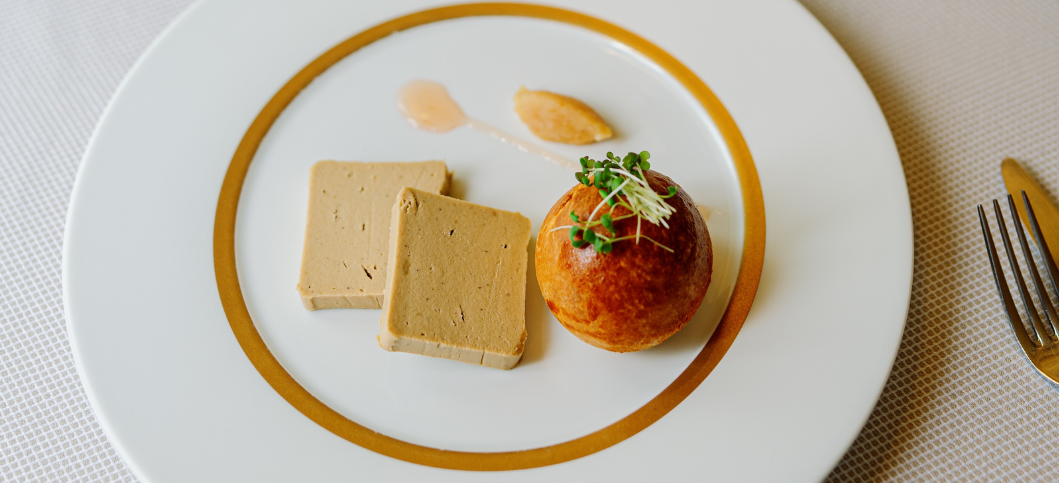
9 Fun Facts About Foie Gras
Foie gras, a culinary delight of richness and wonder, definitely has a tale to tell.
There’s much more to Foie Gras than meets the eye. With a history dating all the way back to 2500 BC, it’s had centuries of being made and consumed in all sorts of weird and wonderful ways by all sorts of weird and wonderful people.
And that’s what we’re going to cover in this post.
We’re going to do a little dive into some fun facts about Foie Gras. From the interesting to the downright silly – we’ve got the best Foie Gras facts in one place.
Before you delve into this post, do take a look at the range of Foie Gras we have on offer here.
Fun Facts About Foie Gras
1. “Foie Gras” Literally Means “Fatty Liver”
Foie Gras is a gourmet dish renowned for its luxurious, velvety texture and flavour that is the result of force-feeding Ducks or Geese to enlarge their livers and make them fattier. This practice is where the name Foie Gras derives from, as it literally translates to “Fatty Liver”.
2. Dates Back to Ancient Egypt
Foie Gras has a long and rich history, with its origins tracing back to Ancient Egypt, where it was considered a prized delicacy. Egyptians saw that Geese and Ducks would often build up fatty reserves before long journeys, so they took advantage of this and started feeding the birds themselves. Eventually, this tradition spread across the world, specifically to Europe.
3. Most Foie Gras Farms Raise Moulard Birds
Moulard Ducks are commonly used in Foie Gras production. Their genetic characteristics make them well-suited for developing the large, rich livers essential for this dish.
4. Foie Gras Can Be Preserved For Up To A Year
Due to its high-fat content and unique preparation methods, Foie Gras can be frozen for up to a year. This makes it a favoured choice for gourmet enthusiasts and Foie Gras lovers, as it retains its exquisite taste and texture over time. However, it is worth noting it will taste worse when it is thawed.
If you want to learn more about how to Serve, Eat And Store Foie Gras, then take a look at our blog post here for all the information you’ll need.
5. French people eat around 170 grams of Foie Gras per year.
In France, Foie Gras is not just a food; it’s a cultural staple. The French population, on average, consumes approximately 170 grams of Foie Gras each year. This goes to show how deep-rooted the connection between Foie Gras and the French people is.
6. The Foie Gras industry supports about 30,000 families.
Foie Gras isn’t just a delicious dish; it’s a whole industry that supports communities across France. Around 30,000 families are directly or indirectly supported by Foie Gras production, with jobs ranging from farmers to artisans and distributors.
7. There are three grades of Foie Gras: A, B, and C.
Foie Gras is categorised into three grades, each reflecting different levels of quality and appearance. Grade A is the highest quality, with a smooth texture and a superior taste. Grade B is often smaller, with a softer texture and darker colour. Grade C is the most affordable but is more suitable for pates and terrines. The lower grades may have slightly less desirable characteristics but are still considered premium products compared to many other foods.
8. France accounts for more than 75% of production worldwide.
France dominates the global Foie Gras industry, producing over 75% of the world’s supply.
9. 90% of Foie Gras producers reside in the Dordogne Valley.
The Dordogne Valley in France is a significant hub for the production of Foie Gras. Around 90% of Foie Gras producers are located in this region, which has a rich history of craftsmanship and a deep connection to the industry.
Bon Appetit!
Foie gras is certainly a dish that has some mystery, but now that we’ve delved a bit deeper into all things Foie Gras, you’ll be well-versed in its history.
From its discovery by the Egyptians and the production techniques, the next time you whip out the Foie Gras for your next dinner party, you’ll be able to explain the type of duck it is, as well as what grade of Foie Gras your guests will be eating.
If you’re eager to learn more about Foie Gras’s rich history, then take a look at our blog post on The Long History Of Foie Gras.
